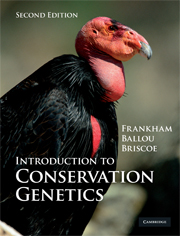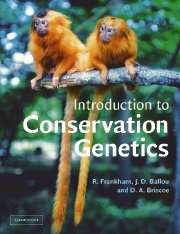Populations of conservation concern are small and/or declining in numbers. Small, isolated populations suffer accelerated inbreeding and loss of genetic diversity leading to reduced reproductive fitness (inbreeding depression) and reduced ability to evolve in response to environmental change
Terms
Binomial distribution, bottleneck, effective population size, evolutionary potential, fixation, idealized population, inbreeding, Poisson distribution, random genetic drift, stochastic
Mauritius kestrel: a species that survived a population size bottleneck of a single pair, but one that is genetically compromised
Species of conservation concern have, by definition, small or declining population sizes
Importance of small populations in conservation biology
Small or declining populations of threatened species are more prone to extinction than large stable populations. Species whose adult population sizes are less than 50, 250 or 1000 are designated as critically endangered, endangered and vulnerable, respectively, by IUCN (Chapter 1). Only ∼ 100 critically endangered northern hairynosed wombats survive in Australia (adults plus juveniles), while the Mauna Kea silversword in Hawaii declined to about two dozen plants. Some species have reached such low numbers that they exist, or have existed, only in captivity. These include Arabian oryx, black-footed ferret, European bison, Pére David's deer, Przewalski's horse, scimitarhorned oryx, California condor, Guam rail, 11 species of Partula snail, Cook's kok'io plant, Franklin tree and Malheur wirelettuce (WCMC 1992; Falk et al. 1996).
Some species have experienced population size reductions (bottlenecks), but have since recovered. The Mauritius kestrel was reduced to a single pair but has now recovered to 400–500 birds (Box 8.1).



